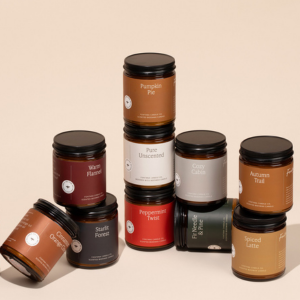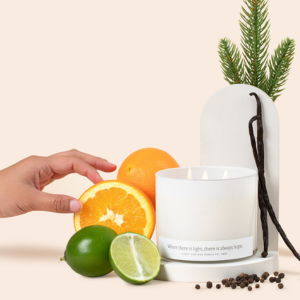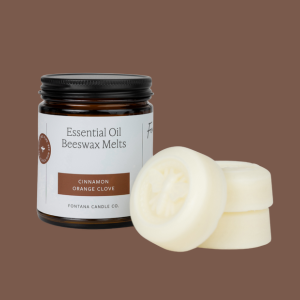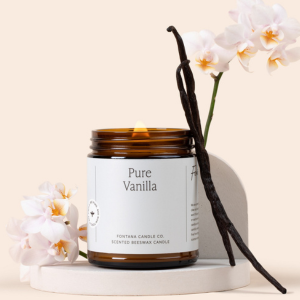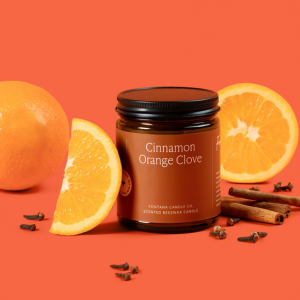Why Do Furniture Tags Exist?

If you've purchased a new couch, mattress, or piece of furniture recently, you might have noticed the "Do Not Remove" tag hanging on it. These seemingly unimportant labels, known as law labels, often spark curiosity, but they serve an important purpose. For wellness enthusiasts like you, it’s a topic worth exploring because it ties into a much larger concept of transparency in consumer goods.
At Fontana Candle Company, we’re passionate about transparency in the products we create, whether it’s ensuring we use clean, natural candle ingredients or promoting an industry standard of disclosure. Believe it or not, furniture tags play a similar role in ensuring that manufacturers are honest about what’s inside their products.
What Are Furniture Tags?
Furniture tags, or law labels, were introduced in the early 1900s to protect consumers. Before these regulations existed, manufacturers could fill bedding, furniture, and cushions with anything—including low-quality or even harmful materials like horse hair, dirt, and corn husks. Customers couldn’t see the contents, so they unknowingly purchased items filled with materials that could compromise quality, hygiene, and safety.
The creation of law labels aimed to solve this problem. These tags ensure that consumers know precisely what materials are inside a product. Much like the ingredient labels on food or the transparency initiatives we champion for candle ingredients, furniture tags represent an ethical approach to honesty in manufacturing.
Breaking Down Law Labels
Law labels provide detailed information about the inner materials, offering consumers a way to make informed decisions. Here's what they typically contain:
-
Filling Materials: The tag specifies the materials used to fill the product, listed by percentage weight. For example, a mattress tag might state "80% Polyurethane Foam, 20% Polyester Fibers."
-
Uniform Registry Number (URN): Many law labels contain a URN, which identifies the manufacturing facility that produced the product. This ensures traceability and accountability, regardless of where the product was created.
Currently, 31 U.S. states and Canada require law labels for certain products, though the specifics vary by location and product type. In Pennsylvania, where our facility is based, both new and secondhand furniture are required to have tags.
Why Transparency in Goods Is Essential
For wellness enthusiasts, understanding what goes into the products we bring into our homes is an important path toward healthier living. Much like knowing the ingredients in processed food or the chemicals in personal care products, knowing what's inside your mattress or couch allows you to eliminate harmful materials from your environment.
At Fontana, we’ve seen firsthand how transparency transforms consumer safety and trust. When we list our natural candle ingredients, it empowers our customers to choose clean, toxin-free products. Furniture law labels do the same, ensuring that no harmful materials make their way into your home.
Transparency Beyond Tags
While law labels are a step in the right direction, there is still progress to be made in transparency laws across industries. For instance, many candles on the market still don’t disclose their full ingredient list, leaving consumers unaware of potentially harmful chemicals. It’s our belief that full disclosure should be standard, whether you’re buying a candle or a memory foam mattress.
Transparency in consumer products isn’t just about regulatory requirements; it’s about fostering trust and promoting health. By advocating for clearer labeling in all industries, we’re creating a safer, more informed world.
What Can You Do?
If transparency resonates with your wellness goals, here are some ways to support this movement:
-
Support brands that champion ingredient transparency and ethical production.
-
Read law labels on furniture and bedding to ensure you're bringing safe, high-quality products into your home.
-
Advocate for transparency in industries that currently lack clear labeling laws, whether it’s candles, skincare, or textiles.
The next time you spot a "Do Not Remove" tag on your furniture, take a moment to appreciate its role in protecting customers like you. And as you light one of our candles made from clean, natural ingredients, know that we’re committed to the same level of transparency and trust. It’s all part of creating a cleaner, healthier space for you and your family.
What are furniture labels? What are they used for? - Xpresa Labels




